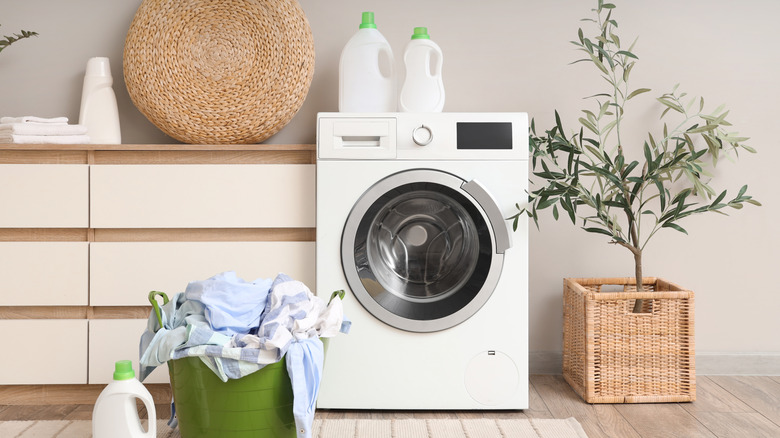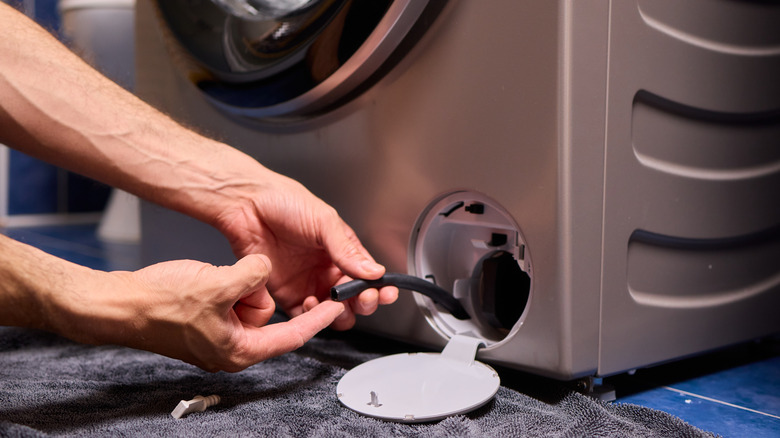How Often You Should Be Draining Your Washing Machine Depends On How You Use It
Draining your washing machine might be a household task that doesn't cross your mind all that often, but it's a necessary one to keep the appliance in good shape. In fact, not draining it regularly is one of the common reasons your washing machine isn't working. Soap residue, lint, and other debris like hair or coins build up within the appliance over time, reducing its efficiency or even causing it to break down if not removed. To prevent these unwanted scenarios, you should be draining your washing machine every 3 to 6 months on average.
Still, how often you should drain your washer largely depends on how you use it. For example, if you have kids or pets, your washing machine is likely working overtime. With such heavy use, you should plan for more frequent draining to tackle the debris buildup before it becomes a problem. Once a month is a good rule of thumb for cases like this. Although cleaning the machine this frequently might seem like a hassle, it's worth it when you consider how much it would cost you to repair your washing machine just because you didn't drain it when you should have.
The machine draining routine for keeping it in tip-top shape
Although most washers nowadays feature a special drain or spin cycle, manually draining your machine is still the best way to effectively clean any debris that might be blocking it. Luckily, the process isn't too complicated, and it's the same for top-load and front-load washers. For starters, you should unplug your machine for safety, as well as lay down some towels and prepare a bucket for catching the water while draining. Then, find the drain hose at the back of your washer and disconnect it. Lower the hose into the bucket to catch the water spilling out. Once it's drained, inspect the hose for any blockage and clean it out with a brush if necessary before reconnecting it.
Next, you'll also have to locate your drain filter. That's what that little door on the front of your washing machine is for. Before you open the panel door to access the filter, lay down some towels and a shallow container to catch any water flowing out. Remove the filter and clean it thoroughly once the water spills out. If the buildup is significant, you can use a brush to scrub it off more easily. When the filter is clean and good to go, put it back in its place and close the panel up.
To make sure you properly drained the washer and cleaned any potential blockages, plug the machine back in and run a test cycle with the empty washer (no need for detergent). If you don't see any issues, you can cross washing machine draining off your task list for at least a month or so.

